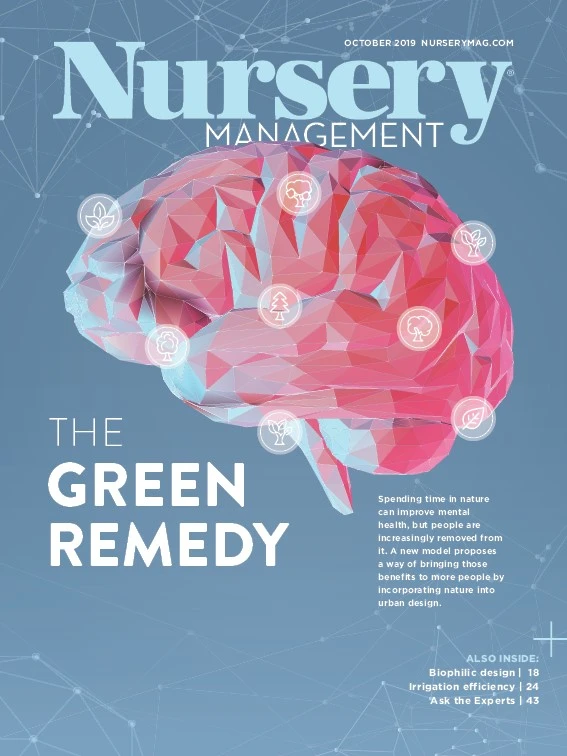

Hans Hansen, Director of New Plant Development with Walters Gardens Inc. is a resident plant expert and the head of the WGI hybridizing team. Hans is well-known throughout the industry for his truly new and improved hosta introductions, though his interests in hybridizing encompass a number of genera. He is also known for his hibiscus breeding efforts, including standouts like ‘Berry Awesome.’ Hansen tells us how hibiscus is trending with consumers and what to expect from future cultivars.
1 | Why are consumers interested in perennial hibiscus? What value do they have for gardeners?
Gardeners love hibiscus because of their large tropical flowers and reliable summer performance. Few other perennials embody the essence of summer like a hibiscus; they prefer the heat and humidity of the dog days of summer. They grow quickly, are easy to cultivate, and are long lived.
2 | What are some of the goals of the hibiscus program at Walters Gardens? What improvements are you working on?
I am primarily working on hibiscus with dark foliage (near black), compact plants, and flowers that have overlapping petals, good quality texture, substance to add interest, and weather resistance.
3 | What is the key to getting dark foliage on hibiscus?
Some hibiscus are bred to have dark leaves. It is a genetic trait. That said, hibiscus foliage will be darkest in full sun. They require the direct ultraviolet rays to bring out the darkest leaf color. Growers that try to get a head start on their hibiscus crop by forcing them in greenhouse conditions will see a lighter or more-green color compared to growing them in direct sunlight outside. Once the plants are moved outdoors, the leaf color darkens.

4 | Are there any new flower colors coming?
Currently, hybridizers are working to get closer to more of a true yellow color as well as closer to the deep lavender-blue category.
5 | How are perennial hibiscus different from rose of sharon?
Perennial hibiscus differ from the rose of sharon. Hardy perennial hibiscus (Hibiscus moscheutos hybrids) re-emerge late each spring (nearly June 1 in Michigan) from below soil and put on an amazing amount of growth in one season; they reach shrub-like dimensions by late July when they are covered in flowers. By the end of October they go dormant and the current season’s stems will have defoliated and may be cleaned up. The rose of sharon (Hibiscus syriacus) is a woody plant that produces new growth at the end of the woody branches from the previous year’s growth. It does not need to be cut back.
For more: www.waltersgardens.com

Explore the October 2019 Issue
Check out more from this issue and find your next story to read.
Latest from Nursery Management
- John Ruter shares UGA's latest woody and herbaceous ornamental plant breeding projects
- Conor Foy joins EHR's national sales team
- Pantone announces its 2026 Color of the Year
- Syngenta granted federal registration for Trefinti nematicide/fungicide in ornamental market
- Get to know Kayela Aeppli
- HILA 2025 video highlights: John Gaydos of Proven Winners
- Q&A with Justin Bartlett
- Be the best choice





